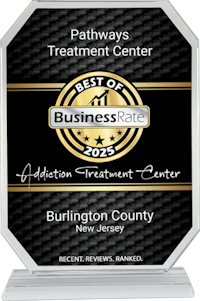Deciding on the right level of care for mental health or addiction treatment can feel overwhelming, especially when options range from outpatient therapy to residential programs. The best choice depends on your current needs, stability, and the kind of support that will help you move forward. Understanding the different levels of care makes it easier to find a path that fits, rather than guessing at what might work.
Some people benefit from structured daily programs, while others need less frequent support. Levels of care for addiction treatment and mental health exist to meet individuals where they are, offering flexibility rather than a rigid approach. The key is recognizing where you are in your journey and what kind of environment will help you progress without feeling either unsupported or overwhelmed.
Early Intervention (Level 0.5) targets individuals with risky substance use, not yet diagnosable. Often identified in medical settings via screenings like SBIRT, sessions are brief, focusing on awareness, education, and motivating healthier choices. Ideal for those who binge drink, misuse prescriptions, or use substances while driving, it aims to prevent escalation before issues become entrenched. Advantages include low intensity, affordability, and accessibility within routine care, but it may not suffice for deeper problems, necessitating referral to higher care levels. Ultimately, it’s a gentle nudge to address risky behavior early, educate, and guide further action if needed.
Outpatient (Level I) care offers flexible treatment for mild to moderate substance use, typically involving up to nine hours of weekly therapy. Ideal for those with stable routines who recognize their substance use issues, it allows people to maintain daily responsibilities while building coping skills. Advantages include lower costs and the ability to apply recovery tools in real-world settings. However, facing triggers without immediate support can increase relapse risk.
Outpatient services also function as a transitional step in addiction treatment, allowing individuals to step up or down in intensity as needed. In essence, Level I care provides structured support without full-time supervision, suited for those with determination, low withdrawal risk, and a stable environment.
Intensive Outpatient Programs (Level II.1) offer 9-19 hours of structured support weekly, exceeding standard outpatient care. They combine individual, group, and family therapies with education on substance use and relapse prevention. Medical and mental health support are available. Ideal for those needing more structure than weekly therapy but not full-time supervision, IOPs aid transition from residential care or provide direct support for those balancing treatment with daily life.
Strengths include maintaining routines and consistent therapeutic contact, skill development, and accountability. Challenges involve juggling treatment with commitments, requiring reliable transportation, stable housing, and strong motivation. IOPs provide a flexible, intermediate step in addiction treatment, adapting to evolving needs.
Partial Hospitalization Programs (PHP) provide intensive daytime treatment (20-30 hours/week), allowing patients to return home at night. Ideal for those needing more than weekly outpatient visits but not 24/7 supervision, PHP includes group therapy, individual counseling, and medication management. For addiction, it’s a step-down from residential care or a step-up from traditional outpatient programs, lasting 2-6 weeks. Key features include: psychiatric oversight, evidence-based therapies, and family involvement. PHP stabilizes acute symptoms, bridging the gap between inpatient and outpatient treatment.
Residential or inpatient treatment, known as Level III in the levels of care for addiction treatment, offers 24-hour structured support in a live-in setting. This option suits people whose daily environment has become unsafe or chaotic and whose life skills and coping strategies need rebuilding under constant supervision.
There are different intensities within Level III:
- Level 3.1 (low intensity) provides a safe, community-style setting with at least five hours of clinical care each week. Residents work on recovery skills and basic life routines without needing full hospital resources.
- Level 3.5 (high intensity) serves people facing more severe challenges, such as unstable mental health or ongoing relapse. Therapy is continuous, helping stabilize behavior and prepare for life outside the facility.
- Level 3.7 (medically monitored) includes full nursing care and physician oversight. It fits individuals with medical or psychiatric concerns who need more monitoring than standard residential care.
Level IV medically managed inpatient care, the most intensive addiction treatment, occurs in hospital-like settings with 24/7 medical monitoring by doctors and nurses. It’s for those with severe withdrawal or serious health/psychiatric complications. Patients undergo controlled detox with daily physician contact and therapy. This level suits individuals at high withdrawal risk (seizures, hallucinations), those needing secure medication-assisted treatment, or those with unstable co-occurring conditions, ensuring immediate medical response and a safe recovery start.
How Do The ASAM Criteria Determine Your Appropriate Level Of Care?
Clinicians use the ASAM Criteria to assess and match people to the proper level in the continuum of levels of care for addiction treatment. It is a person-centered tool that examines six key areas of life. All six dimensions are rated on a severity scale. Higher scores on any dimension can influence placement into more intensive levels of care. Here is how it works:
- Acute intoxication and withdrawal potential. When evaluating someone, we first look at how recently they’ve used substances and if they’re at risk for serious withdrawal. Immediate dangers, such as seizures or heart problems, might mean they need to go to a medical detox unit.
- Physical health and complications. Doctors look for existing medical conditions like diabetes, heart disease, or other physical illnesses that might need monitoring or treatment during rehab.
- Mental and emotional health. This looks at mental health symptoms, like depression, thinking problems, PTSD, or anxiety. These can make recovery harder and might mean you need specialized or dual-diagnosis care.
- Readiness and motivation to change. This examines a person’s willingness to engage in recovery now. Motivation affects not only placement into a program but also the type and length of support provided.
- Risk of relapse or ongoing problems. Here, professionals assess whether a person understands their triggers and coping tools. High relapse risk can justify a shift to more structured care.
- Living situation and recovery support. We look at the strengths and risks in someone’s home life, work, social circle, and community. If there’s not enough support or too many triggers, residential or more supervised programs might be needed.
After we score these six areas, we figure out which dimensions have the highest risk or need. Then, a decision framework helps us place you in the safest but least restrictive setting based on those scores. We reassess regularly, and your care setting can be adjusted up or down as your needs change.
Pathways’ Partial Hospitalization Program (PHP) Helps Fill The Gap
Pathways Treatment Center’s Partial Hospitalization Program (PHP) offers a structured yet flexible approach for those who need more support than outpatient care but don’t require full inpatient treatment. It bridges the gap between intensive residential programs and traditional therapy, providing daily clinical support while allowing participants to return home each evening. This balance makes it a practical option for people managing mental health challenges or transitioning between different levels of care.
The program focuses on individualized treatment, combining therapy, medication management, and skill-building sessions tailored to each person’s needs. Unlike rigid inpatient settings, PHP allows individuals to practice coping strategies in real-world environments, reinforcing progress beyond the clinical space. For those exploring levels of care for addiction treatment, this model can be especially effective, offering consistent support without complete removal from daily life.
A significant advantage of PHP is its capacity for flexibility as participants evolve. The intensity of care can shift gradually, ensuring people don’t feel abruptly disconnected from support systems. This step-down approach helps build confidence and independence, reducing the risk of relapse or setbacks. By filling the middle ground in mental health care, Pathways’ PHP makes recovery more accessible and sustainable.
Contact us today to receive help with your recovery journey.
FAQs About Levels Of Mental Health Treatment Care
A:
- Outpatient Therapy: Individual, group, or family sessions while living at home.
- Intensive Outpatient Programs (IOP): Structured therapy 3–5 days weekly for several hours.
- Partial Hospitalization Programs (PHP): Daytime treatment nearly every day for 4–8 hours.
- Inpatient Hospitalization: 24/7 psychiatric care for crisis stabilization
- Residential Treatment: Live-in programs lasting weeks to months for longer-term support
A: IOP offers a higher intensity of mental health support (daily structured therapy sessions and medication check-ins) while patients still sleep at home. It’s a middle ground, helping those with moderate symptoms get stronger support without full hospitalization.
A: Individuals with more acute symptoms, recent hospitalization, or safety concerns typically move into PHP. It offers near-daily, half-day programs with medical supervision, acting as a bridge from inpatient hospitalization to less intensive support.
A: Residential care is best for people who need a safe, supportive living environment away from everyday stressors. It offers full-time therapy over 30 to 90 days and suits those who haven’t responded to outpatient or PHP, or who face ongoing triggers at home.
A: An inpatient stay is chosen for urgent mental health crises, including risk of self-harm, psychosis, or severe withdrawal symptoms. It provides secure care until a person is stable enough for a step-down level like PHP or outpatient care.
A: Treatment is guided by current symptoms, safety risks, ability to function, and available support. The ideal level is the lowest needed to stabilize symptoms and improve daily life, then adjustments are made as progress is achieved.
A: Yes. Many programs now offer online IOP and PHP, letting individuals access structured therapy from home. This makes higher levels of support available to those without easy access to in-person services.




